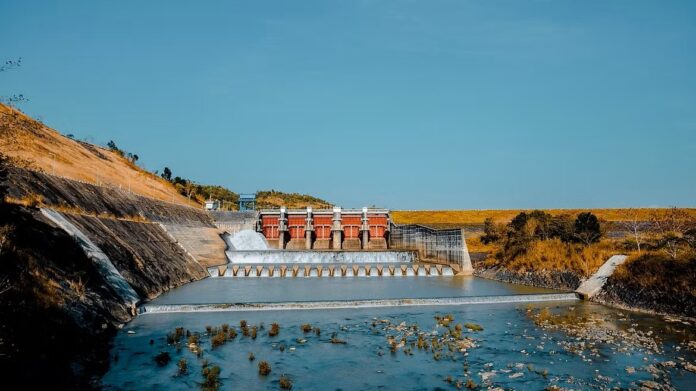A team of researchers from Dibrugarh University, Assam, has been granted a patent for their innovative hydroelectric turbine. This technological advancement is set to revolutionize the way hydroelectric power is generated, especially in regions like Assam that are rich in water resources. The new turbine design promises to be more efficient, cost-effective, and environmentally friendly, potentially transforming the hydroelectric industry in both India and abroad.
The Research and Development Journey
The research team, led by Dr. [insert name], a professor in the Department of Mechanical Engineering at Dibrugarh University, began working on the hydroelectric turbine project over five years ago. The primary motivation behind the project was to address some of the key challenges associated with conventional hydroelectric turbines, which are often expensive to build and maintain, and can have adverse environmental impacts, such as affecting aquatic ecosystems.
Dr. [insert name] explained the initial motivation behind the research: “Assam, with its numerous rivers and water bodies, has enormous potential for hydroelectric power. However, existing technologies are either too costly or environmentally damaging. Our goal was to develop a turbine that is both affordable and sustainable, making hydroelectric power accessible even in remote areas.”
After years of design, prototyping, and rigorous testing, the team’s efforts have finally paid off with the granting of a patent for their new turbine design. The patent is a significant milestone, not only for the university but also for the broader field of renewable energy research in India.
Key Features of the Patented Turbine
The patented hydroelectric turbine developed by the Dibrugarh team is notable for several key innovations. Firstly, it is designed to be highly efficient, capable of generating more power from lower water flow rates. This makes it particularly suitable for smaller rivers and streams, which are abundant in Assam and other parts of the northeastern region. Unlike traditional turbines that require a significant drop in water elevation to generate power, the new design can operate efficiently with minimal water height differences.
Secondly, the turbine is constructed from locally sourced materials, making it cost-effective and easy to manufacture. This has the potential to significantly lower the costs of building small-scale hydroelectric plants, making renewable energy more accessible to rural and underserved communities. Dr. [insert name] emphasized this aspect, saying, “One of our main goals was to develop a solution that could be implemented at the local level, using local materials and labor. This will reduce reliance on expensive imports and promote local economic development.”
Additionally, the turbine is designed to have minimal impact on the environment. Its blades are engineered to allow fish and other aquatic life to pass through safely, addressing a common concern with conventional turbines that often disrupt aquatic ecosystems. The team has also incorporated noise-reduction technology into the design, making it more suitable for installation in environmentally sensitive areas.
Potential Impact on Assam and Beyond
The successful patenting of the hydroelectric turbine is a major victory for Assam’s growing renewable energy sector. Assam, which is crisscrossed by major rivers like the Brahmaputra and its tributaries, has long been seen as a region with enormous untapped hydroelectric potential. However, the high costs and environmental concerns associated with large-scale dams and hydroelectric plants have hindered the development of the sector. The new turbine design could change that.
By making small-scale hydroelectric power more viable, the Dibrugarh turbine could provide a sustainable energy solution for Assam’s rural communities, many of which still lack reliable access to electricity. The state government has already expressed interest in supporting pilot projects to test the turbine in real-world settings.
“Assam has always had the potential to be a leader in renewable energy, especially hydroelectric power,” said [insert name], a representative of Assam’s Department of Energy. “With this new technology, we are one step closer to realizing that potential. We are excited to see how this innovation can be applied not just in Assam, but in other parts of the country as well.”
Global and National Implications
The implications of this new technology extend beyond Assam. As the world continues to grapple with climate change and the need to reduce carbon emissions, there is a growing demand for sustainable and renewable energy sources. Hydroelectric power is one of the most reliable forms of renewable energy, but its growth has been limited by environmental and economic challenges. The Dibrugarh team’s turbine addresses both of these issues, offering a scalable solution that can be applied globally.
In India, the government’s push for renewable energy as part of its National Action Plan on Climate Change could benefit from the new technology. As India aims to achieve 40% of its power capacity from non-fossil fuel sources by 2030, innovations like the Dibrugarh turbine could play a crucial role in meeting these goals.
The Road Ahead
The researchers at Dibrugarh University are now looking ahead to the next phase of their project. With the patent secured, they plan to work with industry partners and government agencies to bring the turbine into mass production. Dr. [insert name] and his team are optimistic about the future: “This is just the beginning. We believe that our turbine can make a significant impact, not only in Assam but around the world. The potential for clean, affordable, and sustainable energy is immense.”
As the world continues to search for solutions to its energy challenges, the innovative minds in Assam are proving that local ingenuity can have global implications.




